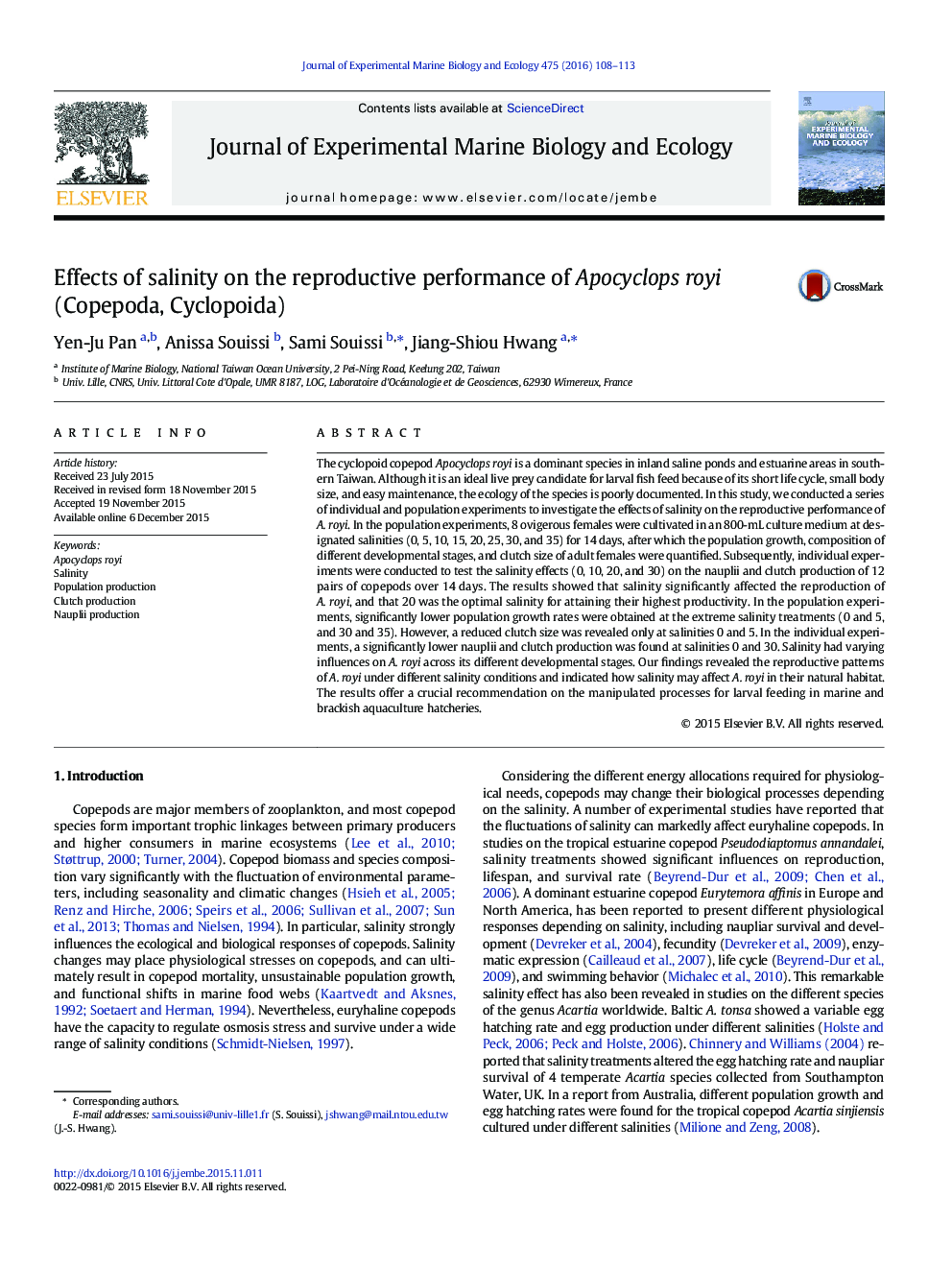| Article ID | Journal | Published Year | Pages | File Type |
|---|---|---|---|---|
| 4395285 | Journal of Experimental Marine Biology and Ecology | 2016 | 6 Pages |
•High reproduction of Apocyclops royi are in the salinity range of 10–25.•Reduced egg production in low-salinity treatments (0 and 5)•Low population sustainability in high-salinity treatments (30 and 35)
The cyclopoid copepod Apocyclops royi is a dominant species in inland saline ponds and estuarine areas in southern Taiwan. Although it is an ideal live prey candidate for larval fish feed because of its short life cycle, small body size, and easy maintenance, the ecology of the species is poorly documented. In this study, we conducted a series of individual and population experiments to investigate the effects of salinity on the reproductive performance of A. royi. In the population experiments, 8 ovigerous females were cultivated in an 800-mL culture medium at designated salinities (0, 5, 10, 15, 20, 25, 30, and 35) for 14 days, after which the population growth, composition of different developmental stages, and clutch size of adult females were quantified. Subsequently, individual experiments were conducted to test the salinity effects (0, 10, 20, and 30) on the nauplii and clutch production of 12 pairs of copepods over 14 days. The results showed that salinity significantly affected the reproduction of A. royi, and that 20 was the optimal salinity for attaining their highest productivity. In the population experiments, significantly lower population growth rates were obtained at the extreme salinity treatments (0 and 5, and 30 and 35). However, a reduced clutch size was revealed only at salinities 0 and 5. In the individual experiments, a significantly lower nauplii and clutch production was found at salinities 0 and 30. Salinity had varying influences on A. royi across its different developmental stages. Our findings revealed the reproductive patterns of A. royi under different salinity conditions and indicated how salinity may affect A. royi in their natural habitat. The results offer a crucial recommendation on the manipulated processes for larval feeding in marine and brackish aquaculture hatcheries.
